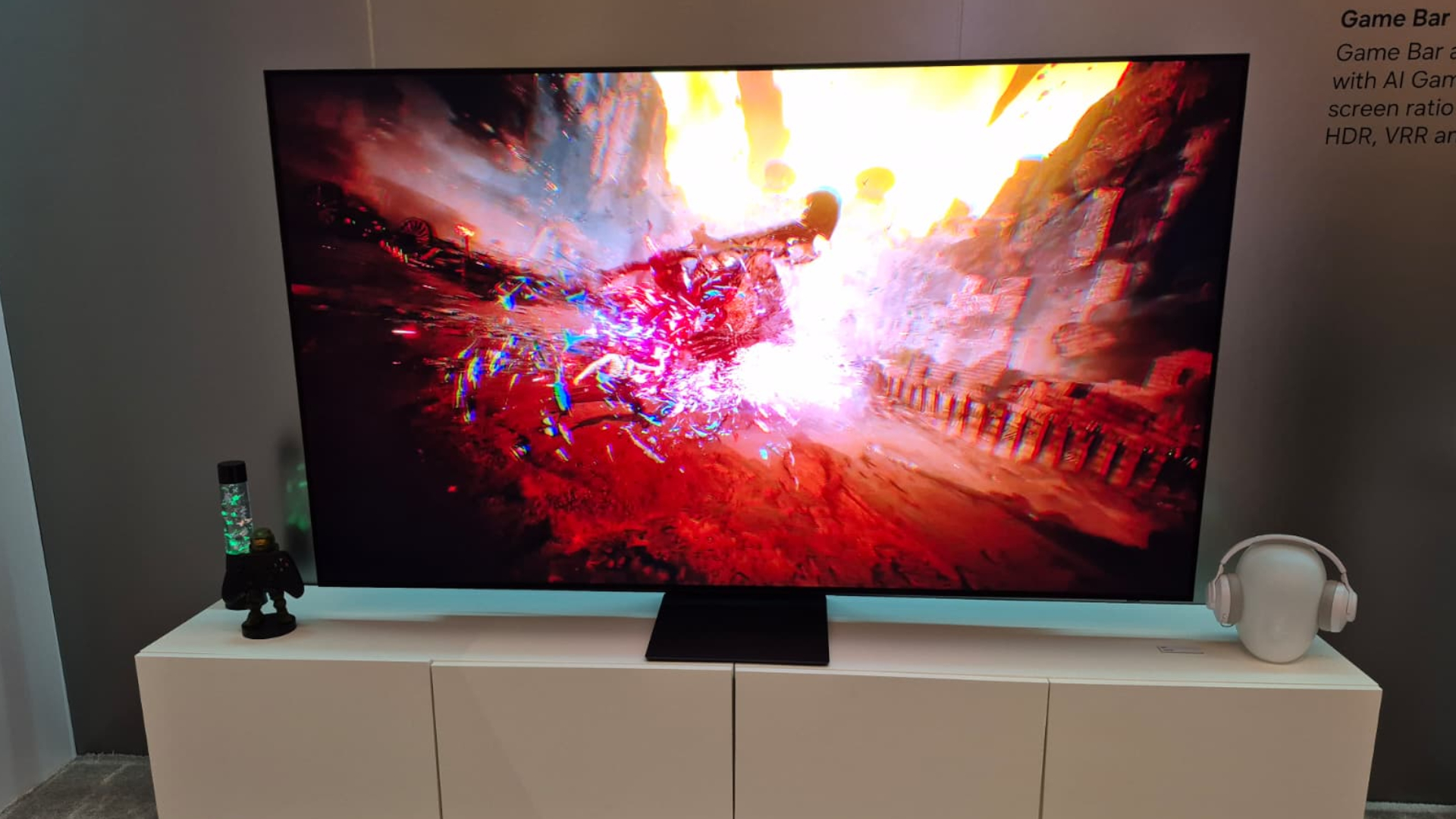We tried playing PC games on MacBook Pro M1 Max via Parallels — it’s bad
Results were less than optimal

There’s no question that Apple’s new MacBook Pro 14-inch 2021 and MacBook Pro 16-inch 2021 are powerful laptops. The M1 Pro and M1 Max processors packed within different laptop configurations mark a serious jump from the previous M1 chip. As we’ve noted in our review of the 14-inch model, Apple has given long-time enthusiasts the MacBook Pro they’ve yearned for.
While both MacBook Pros are leaps beyond previous Apple notebooks and some competitive laptops, they fall short when it comes to gaming performance. Our own tests of the 14- and 16-inch notebooks revealed lower-than-expected frame rate numbers. The results are surprising considering how, on paper, the M1 Pro and M1 Max should deliver better-than-average gaming performance.
- Apple MacBook Pro 14-inch (2021) review
- MacBook Pro 2021 (16-inch) review: Power beyond belief
- Plus: Samsung Galaxy S22 could look way different than the S22 Ultra
We recently detailed some of the reasons the new MacBook Pros are a waste for gamers. Some commenters stated that it’s possible to run Parallels to play Windows games on the new Apple laptops (as is the case with 2020’s M1-powered MacBook Pro). This piqued our interest so we endeavored to test some AAA games on the 16-inch M1 Max-powered MacBook Pro via Parallels. Our aim was to put titles through our standard litany of performance tests and gauge the results.
Before moving on, we should explain what Parallels is and what it does. Parallels Desktop for Mac (as it is officially called) is software that provides hardware virtualization for Mac computers with Intel and M1 processors. It even has x86-64 architecture emulation for Apple silicon Macs. Parallels allows users to run Windows programs that don’t have Mac versions. It’s also useful for transferring data from PC to Mac. With over 7 million users, it’s an extremely popular program.
Unfortunately, using Parallels on the 16-inch M1 Max MacBook did not provide a smooth gaming experience. To be frank, we faced a host of problems running games on the program. None of the 3DMark tests ran through the software installs. Worse still was the fact that half the games we tried to test failed to load altogether.
| Header Cell - Column 0 | Result |
|---|---|
| Assassin's Creed Valhalla | Did not load |
| Borderlands 3 | Loaded but didn't run |
| DiRT 5 | Did not load |
| Far Cry New Dawn | Loaded, ran and played |
| Far Cry 6 | Did not load |
| Grand Theft Auto V | Loaded, ran and played |
| Metro Exodus | Loaded, ran and played |
| Red Dead Redemption 2 | Did not load |
| Shadow of the Tomb Raider | Loaded but didn't run |
Titles like Assassin’s Creed Valhalla, DiRT 5, Shadow of the Tomb Raider and Red Dead Redemption 2 did not load. Borderlands 3 loaded but failed to run (there is a distinction between the two). We had better luck with Far Cry New Dawn, Metro Exodus and Grand Theft Auto V. They loaded, ran, and played well enough. However, the 3DMark tests did not report results accurately.
We can’t say we’re surprised by these results. After all, Parallels is a virtual machine. It isn’t a native app made specifically for running games. Though some titles are indeed playable via Parallels, it’s not an ideal solution (to say the least).
Get instant access to breaking news, the hottest reviews, great deals and helpful tips.
Colleagues we spoke with at other Future publications and elsewhere in the industry say that this is, for the lack of a better term, a “known issue” that even the M1 Max can’t solve (at least for the moment). Based on our research and what our colleagues believe, this comes down to matters of compatibility between Microsoft and Apple products. There’s also the perpetual difficulty of getting programs to run as intended in a virtual machine like Parallels.
After spending nearly an entire workday testing games, we’ve concluded that AAA PC gaming may be possible on the 16-inch M1 Max-powered via Parallels — though it’s a dicey proposition. Some titles will run but others will fail to even load. The inconsistency isn’t great and is proof that Apple’s hardware is still not suitable for AAA gaming experiences. As far as we’re concerned it’s not worth the time or headaches trying to play games through Parallels will engender.
These results are disappointing considering the power of the M1 Max GPU. But it’s not so much an inherent problem of the chip as it is about developers not optimizing games for macOS. Apple provided us with a list of some AAA titles playable on macOS. Notable games include Shadow of the Tomb Raider and Borderlands 3. We tested both on the 16-inch MacBook Pro with an M1 Max chip and they ran well, with Borderlands 3 hitting 40fps at 1080p and Shadow of the Tomb Raider averaging 85fps at the same resolution. While those are solid AAA releases, similar titles aren’t ubiquitous on macOS.
One of the main issues with a lot of these games is that -- perhaps for good reasons — they're not designed to recognize the M1 Max chip's graphics hardware as something that is capable of running them, or (on the games that do run) something that is capable of running them optimally. We would need to do a deeper dive into the M1 graphics architecture to discover why this is the case. That’s an article for another day.
The M1 Max is a significant step forward for Apple silicon and is more than capable of providing excellent gaming performance. But until things change with game optimization (and publisher relationships), current and future MacBooks will not have the gaming experiences found on other devices and platforms. As far as using Parallels to play PC games on Mac is concerned, you’re free to give it a try. But based on our tests, don’t expect a smooth ride.

Tony is a computing writer at Tom’s Guide covering laptops, tablets, Windows, and iOS. During his off-hours, Tony enjoys reading comic books, playing video games, reading speculative fiction novels, and spending too much time on X/Twitter. His non-nerdy pursuits involve attending Hard Rock/Heavy Metal concerts and going to NYC bars with friends and colleagues. His work has appeared in publications such as Laptop Mag, PC Mag, and various independent gaming sites.

